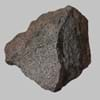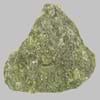Definition
Ijolite is an intrusive igneous rock which is composed mainly of nepheline and an alkali pyroxene, usually aegirine-augite
A water-soluble mineral sediment resulting from concentration and crystallization by evaporation from an aqueous solution
Origin
Finland, Europe
USA
Discoverer
Unknown
Usiglio
Etymology
From the first syllable of the Finnish words Ii-vaara, Iijoki, &c. commonly used geographical names in Finland, and the Gr. Xiflos, a stone
From a sediment left after the evaporation
Class
Igneous Rocks
Sedimentary Rocks
Sub-Class
Durable Rock, Medium Hardness Rock
Durable Rock, Soft Rock
Group
Plutonic
Not Applicable
Other Categories
Coarse Grained Rock, Opaque Rock
Coarse Grained Rock, Fine Grained Rock, Medium Grained Rock, Opaque Rock
Texture
Earthy, Granular
Earthy
Color
Brown, Buff, Cream, Green, Grey, Pink, White
Colourless, Green, Grey, Silver, White
Durability
Durable
Durable
Appearance
Banded and Foilated
Glassy, Vesicular and Foilated
Interior Uses
Decorative Aggregates, Entryways, Floor Tiles, Flooring, Homes, Interior Decoration, Kitchens
Decorative Aggregates, Entryways, Flooring, Homes, Interior Decoration
Exterior Uses
As Building Stone, As Facing Stone, Garden Decoration, Office Buildings, Paving Stone
As Building Stone, As Facing Stone, Garden Decoration, Paving Stone
Other Architectural Uses
Curbing
Curbing
Construction Industry
As Dimension Stone, Cement Manufacture, Construction Aggregate, for Road Aggregate, Landscaping, Making natural cement, Manufacture of Magnesium and Dolomite Refractories
As a Flux in the Production of Steel and Pig Iron, As a Sintering Agent in Steel Industry to process Iron Ore, As Dimension Stone, Cement Manufacture, for Road Aggregate, Making natural cement, Manufacture of Magnesium and Dolomite Refractories
Medical Industry
Not Yet Used
Taken as a Supplement for Calcium or Magnesium
Antiquity Uses
Artifacts, Monuments, Sculpture, Small Figurines
Artifacts
Commercial Uses
Cemetery Markers, Creating Artwork
Used in the manufacture of Ceramic Powder, Used in the preparation of Sulfuric Acid and Silicon Diborite
Types
Not Available
Not Available
Features
Application of acids on the surface causes cloudy frosting, Available in Lots of Colors and Patterns, Is one of the oldest rock
Generally rough to touch, Splintery, Veined
Archaeological Significance
Monuments
Used
Not Yet Used
Famous Monuments
Data Not Available
Not Applicable
Sculpture
Used
Not Yet Used
Famous Sculptures
Data Not Available
Not Applicable
Figurines
Used
Not Yet Used
Formation
Ijolite is a fine-grained, hard rock which is a type of metasomatite, essentially altered basalt. It forms with or without crystallization, either below the surface as intrusive rocks or on the surface as extrusive rocks.
Evaporite is water-soluble mineral sediment which forms from concentration and crystallization by evaporation from an aqueous solution.
Mineral Content
Albite, Amphibole, Biotite, Cancrinite, Feldspar, Hornblende, Plagioclase, Pyroxene, Sodalite
Calcite, Cancrinite, Gypsum, Kyanite, Magnetite
Compound Content
Aluminium Oxide, CaO, Iron(III) Oxide, FeO, Potassium Oxide, MgO, MnO, Sodium Oxide, Phosphorus Pentoxide, Silicon Dioxide
CaMg(CO3)2, CaO, Calcium Sulfate, KCl, MgO, NaCl
Types of Metamorphism
Burial Metamorphism, Cataclastic Metamorphism, Contact Metamorphism
Burial Metamorphism, Cataclastic Metamorphism, Contact Metamorphism, Impact Metamorphism, Regional Metamorphism
Types of Weathering
Biological Weathering, Chemical Weathering
Not Applicable
Types of Erosion
Chemical Erosion, Water Erosion, Wind Erosion
Not Applicable
Grain Size
Coarse Grained
Medium to Fine Coarse Grained
Fracture
Conchoidal to Uneven
Conchoidal
Porosity
Less Porous
Less Porous
Luster
Greasy to Dull
Subvitreous to Dull
Compressive Strength
Not Available
Toughness
Not Available
Not Available
Specific Gravity
2.6-2.76
2.86-2.99
Transparency
Opaque
Translucent
Density
2.6 g/cm3
2.8-2.9 g/cm3
Specific Heat Capacity
Not Available
Resistance
Heat Resistant, Impact Resistant, Wear Resistant
Heat Resistant, Pressure Resistant
Deposits in Eastern Continents
Asia
Indonesia, Iran, Russia, Saudi Arabia, Sri Lanka, Taiwan, Thailand, Turkey, Vietnam
Not Available
Africa
Angola, Egypt, Madagascar, Namibia, Nigeria, South Africa
Not Available
Europe
England, Finland, Germany, Great Britain, Greece, United Kingdom
United Kingdom
Others
Not Yet Found
Not Yet Found
Deposits in Western Continents
North America
Canada, USA
USA
South America
Colombia
Colombia, Paraguay
Deposits in Oceania Continent
Australia
New Zealand, Queensland, Western Australia
Central Australia, Western Australia










